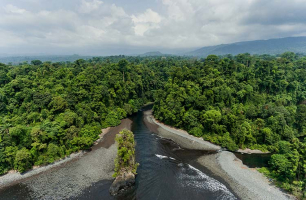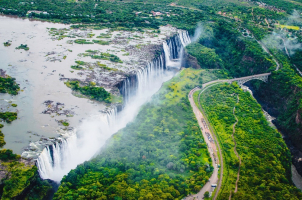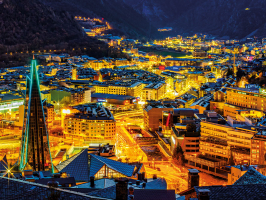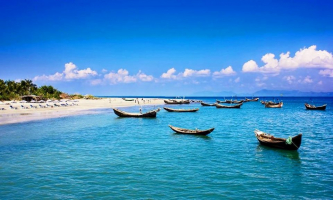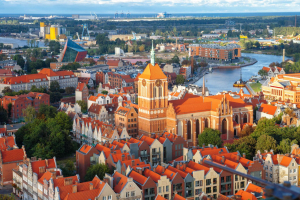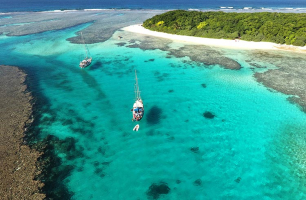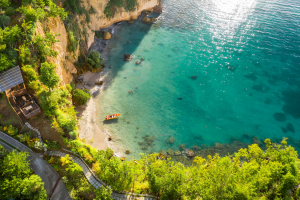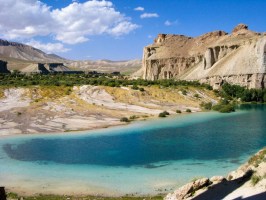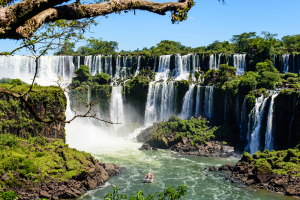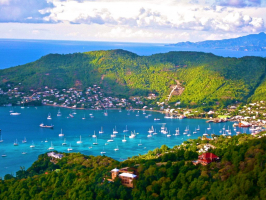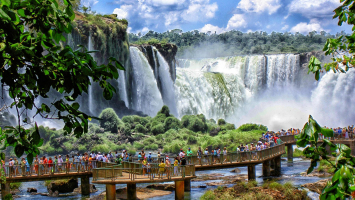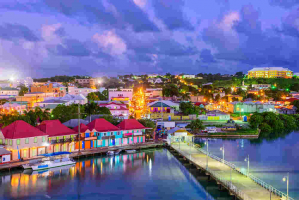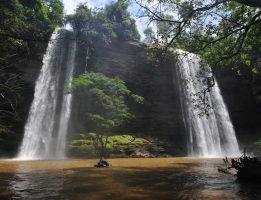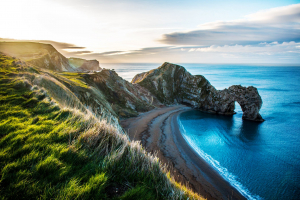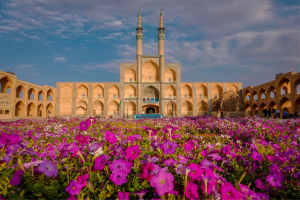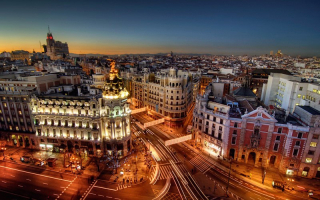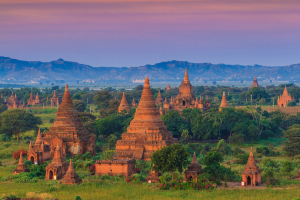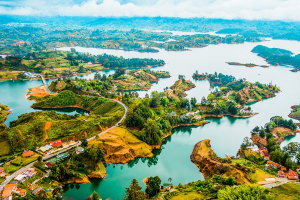Top 10 Best Tourist Destinations In Mali
Mali is a land of many cultures and creeds, sandwiched between the rolling Sahel and the endless dunes of the Sahara Desert. From the salt-caked outposts of ... read more...Taoudenni in the north to the throbbing market town of Sikasso in the south, the lion-spotted reaches of Boucle de Baoulé in the west to the protected swaths of Ansongo in the east, there's everything to experience here, from time-honored tribal villages to groaning camel caravans. Let's take a look at the best places to visit in Mali.
-
Timbuktu is ranked first on the list of tourist destinations in Mali. Timbuktu marked the end of many a Berber trader's and Bedouin caravan man's arduous journey across the great Sahara's shifting sand dunes.
It is a historical and still-inhabited city in Mali, West Africa, located 20 kilometers (12 miles) north of the Niger River on the southern edge of the Sahara Desert. The town serves as the capital of the Timbuktu Region, one of Mali's eight administrative regions. According to the 2009 census, it had a population of 54,453. Even the name conjured up images of dusty bazaars where spices and sabers and strange folk trinkets rattled and scented the air, evoking mystery and magic and the feel of far-flung exoticism.
Timbuktu is no longer the perplexing, perplexing enigma that it once was, but there are traces of the past.Discover them between the crisscrossing grids of sand-caked streets, in the muddy walls of the Sankore Mosque, or beneath the spiked rises of the Djingareiber.- Best places to visit: The Quirimbas Archipelago, The Bazaruto Archipelago & Vilanculos, Benguerra, Maputo
- Location: Tombouctou Region, Mali
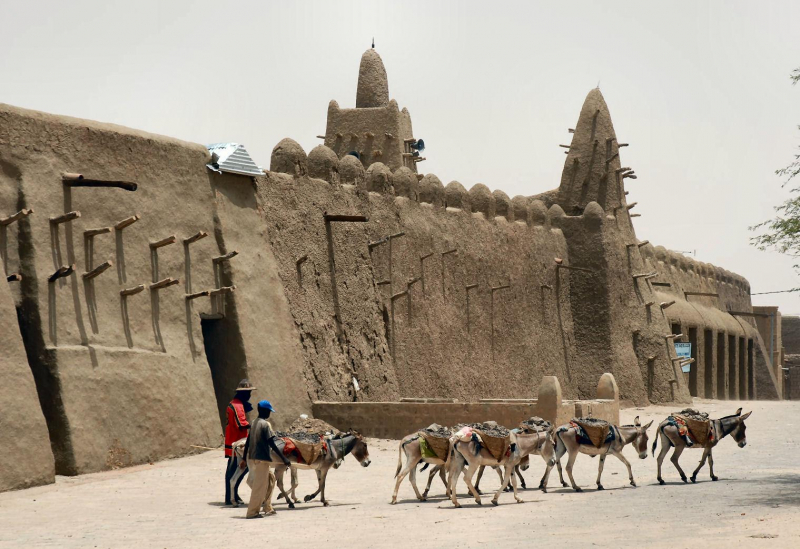
wikivoyage.org 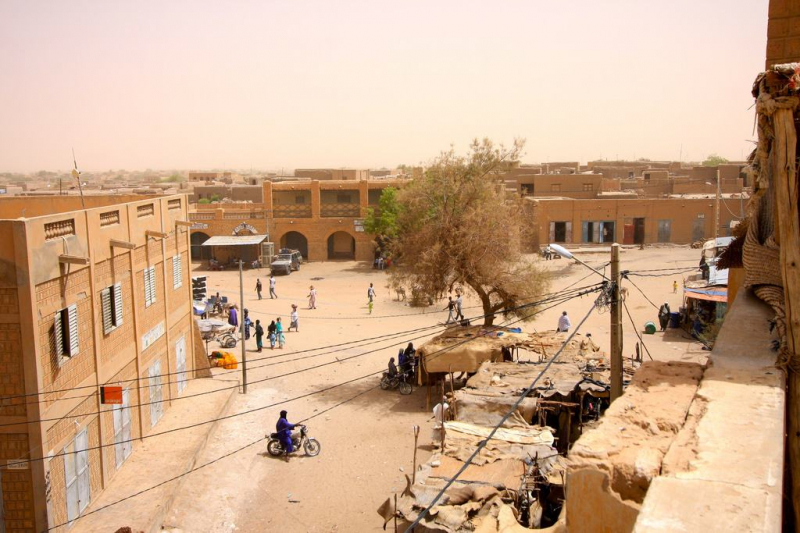
thecrazytourist.com -
Gao is the capital of the Gao Region in Mali. The city is located on the left bank of the Niger River, 320 kilometers (200 miles) east-southeast of Timbuktu, at the junction with the Tilemsi valley.
Gao's fortunes have ebbed and flowed over the centuries like a yoyo's ups and downs.The town was once the imperial heart of the great Songhai Empire, but it was later almost entirely abandoned in favor of the new capital at Timbuktu.Gao, on the other hand, clung to life in the midst of the dusty Sahel. Its tenacious residents kept their mud-brick, mat-built yurts standing, and life went on.Gao, as one of the top tourist destinations in Mali, has a variety of attractions for visitors to enjoy. Today, Gao is a great place to get a sense of Mali's earthy, ancient character, while craft markets, the acclaimed Sahel Museum, and 15th-century sepulchres like the Askia Tomb (yes, it's supposed to look like Egypt's pyramids!) add a slew of cultural draws to the mix.
- Best places to visit: Gao Mosque, Sahel Museum, Traditional markets, La Dune Rose,etc.
- Location: Gao Region, Mali
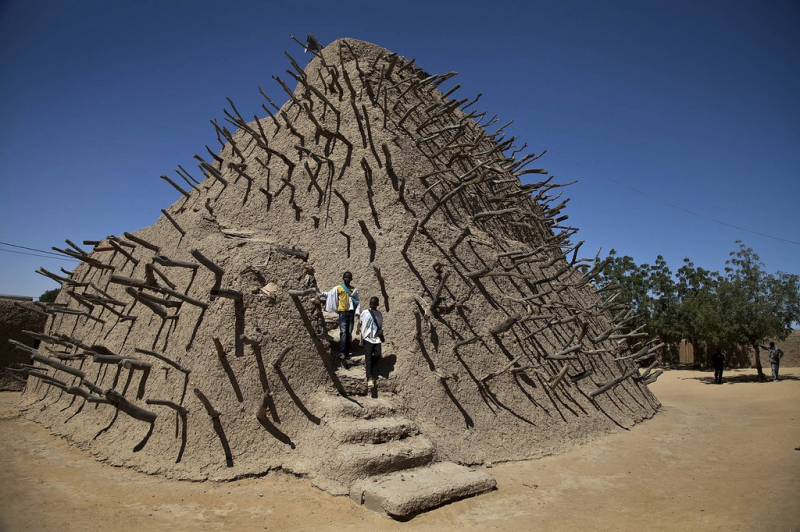
flickr.com 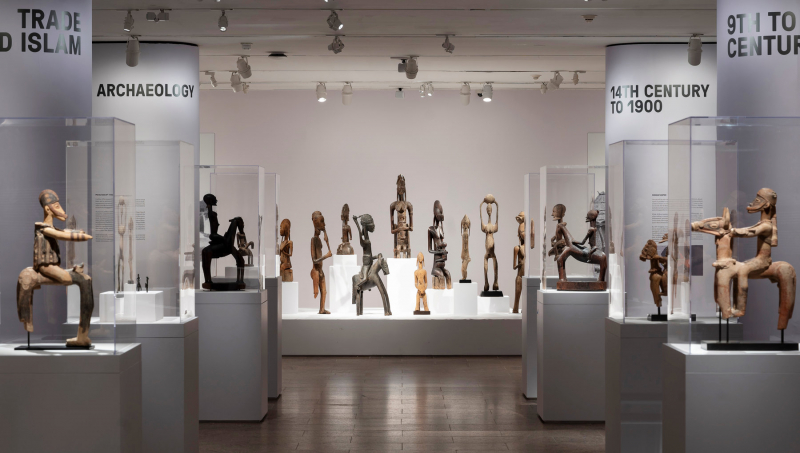
nytimes.com - Best places to visit: Gao Mosque, Sahel Museum, Traditional markets, La Dune Rose,etc.
-
Prepare your haggling valves and shopping glands for a trip to Bamako, largest and most frantic city, one of the most popular tourist destinations in Mali, where bazaars selling everything from carved folklore figurines to stacks of pungent spices crowd the street corners and sun-baked squares.
Bamako is Mali's capital and largest city, with a population of 1.8 million people (2009 census, provisional). Bamako (Bàmak in Bambara) gets its name from the Bambara word for "crocodile tail." It was estimated in 2006 to be the fastest growing city in Africa and the sixth fastest in the world, and it has an undeniably likable quality to it.
It exudes a palpable energy and a distinct lived-in vibe.The nightlife pulses to a medley of West African samba; on weekends, the jazz bars are packed with beer drinkers.
- Best places to visit: Musee National de Bamako, Zoo National du Mali, Cathedral of Bamako, Bamako Grand Mosque,etc.
- Location: Southwestern Mali
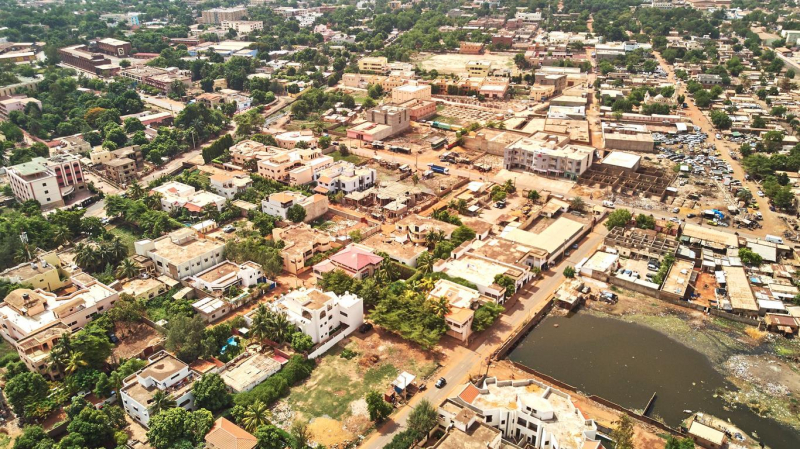
kayak.com 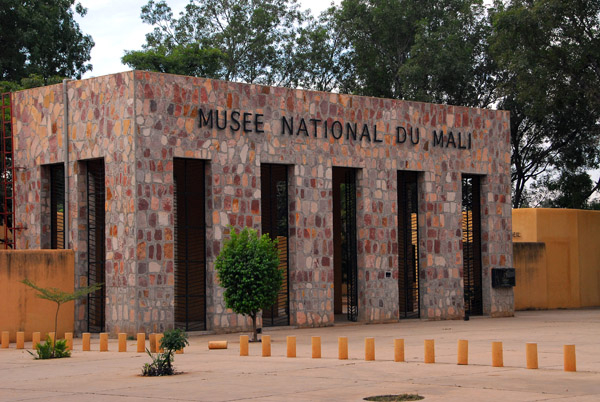
pbase.com -
Few places in Mali, if not all of north-west Africa, are as impressive as Djenné's historic city. It is known for its distinctive mud-brick architecture and long history as a stop on the old caravan routes across the Sahel and Sahara, and is crowned in the center by the adobe rises of one fascinating Great Mosque. The town boomed during the 15th and 16th centuries, thanks to the passage of minerals and precious metals (and, of course, slaves).
The town is known for its distinctive adobe architecture, most notably the Great Mosque, a revered religious center that was built on the site of an earlier mosque in 1907. archaeological excavations at Djenné-Djenno have revealed the town to be one of the oldest in the entire Niger basin. To the south of town is Djenné-Djeno, the site of one of Sub-Saharan Africa's oldest known towns. UNESCO designated Djenné and Djenné-Djeno as World Heritage Sites in 1988. As a result, it is included on the list of Mali tourist attractions.
- Location: Inland Niger Delta region, Mali
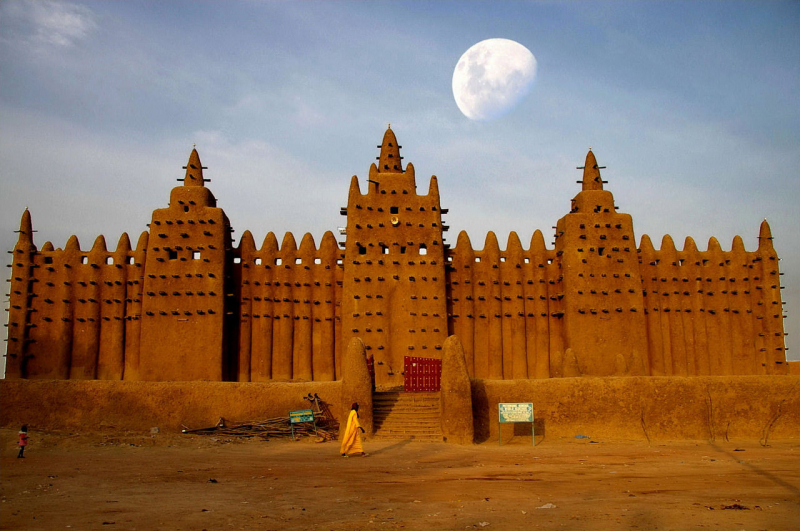
pandotrip.com 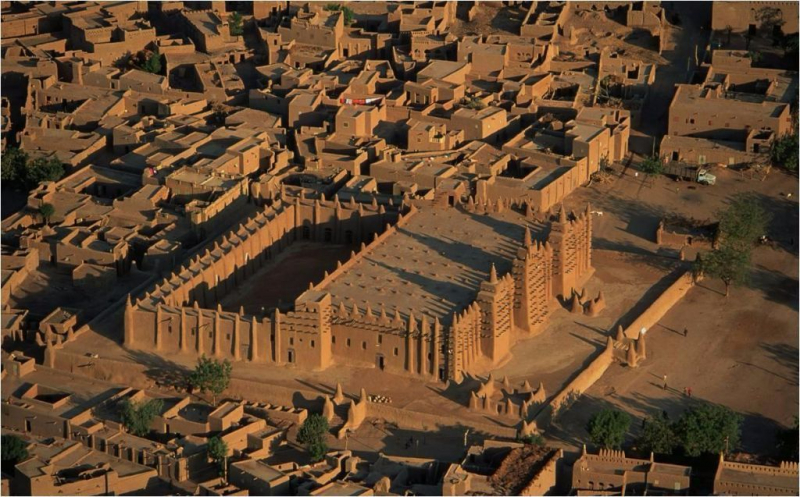
pinterest.com -
Ségou is a town and urban commune in south-central Mali, located 235 kilometers northeast of Bamako on the Niger River's right bank. The town serves as the administrative center for the Ségou Cercle and the Ségou Region. It is Mali's fifth-largest town, with 130,690 inhabitants in 2009.
It was once the beating heart of the Bambara Kingdom, a power that ruled over the lands of central Mali until the turn of the nineteenth century.Today, its prowess and capital title are gone, but the city retains a few relics from that illustrious era.
Check out the tomb of Biton Mamary Coulibaly, the former Bambara monarch, or the bustling port sides, which were once the town's trading powerhouse.
Ségou is also known for its charming French colonial architecture. This can be found fringing the inner streets in a medley of Parisian facades and romantic governmental houses.- Hotels to stay: Hambe Hotel Bar Restaurant, Segou Grand Mosque, Papillon Reizen, Ndomo Bogolan Textile Workshop, etc.
- Best places to visit: Soroble Centre, Segou Grand Mosque, Papillon Reizen, Ndomo Bogolan Textile Workshop, etc.
- Location: South-centre Mali
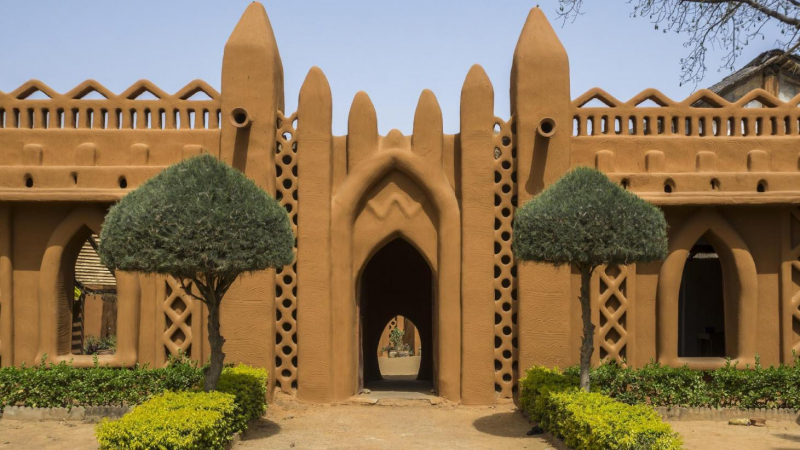
agoda.com 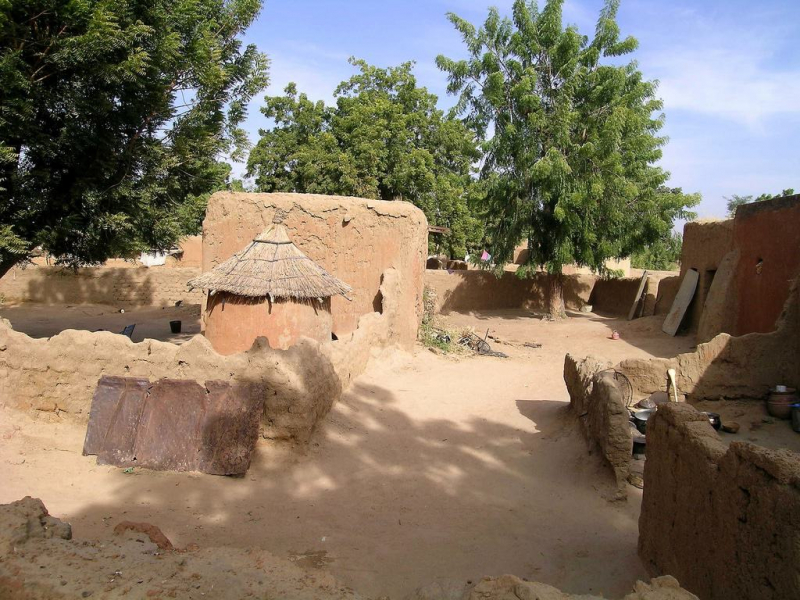
thecrazytourist.com -
If you are a mountaineer and love to explore the majestic mountains, the following place should be on your list of tourist destinations in Mali. Mount Hombori, a great escarpment of rock rising in an ochre-hued wall from the Sahelian wilds of south-central Mali, is West Africa's answer to Australia's Uluru.
Mount Hombori (Tondo Hombori) is a mountain in Mali's Mopti Region, close to the town of Hombori. It is Mali's highest point, standing at 1,155 meters. Mount Hombori is an important biodiversity hotspot in the Sahel, home to 150 different plant species as well as mammals, birds, reptiles, and insects on its two-square-kilometer plateau surface.
It looms above the horizon not far from the town of the same name, a place of creaking wagons, winding alleyways, and low-rise rock homes inhabited by the friendly Dogon peoples. The great bluff is undeniably the draw, and visitors now flock here to join daring 4X4 excursions into the sands, or to unearth the fascinating past being unearthed by archaeologists in the cave systems that carve their way deep into the mountain's subterrane.
- Location: Hombori, Malawi
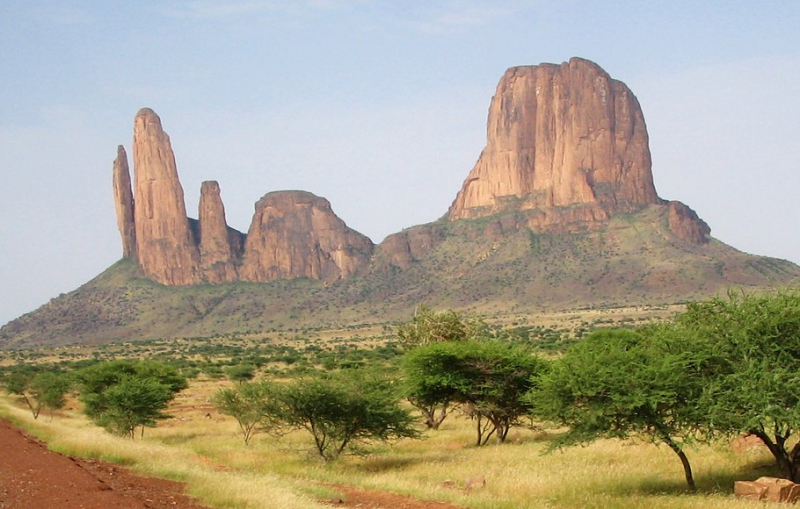
tourtravelworld.com 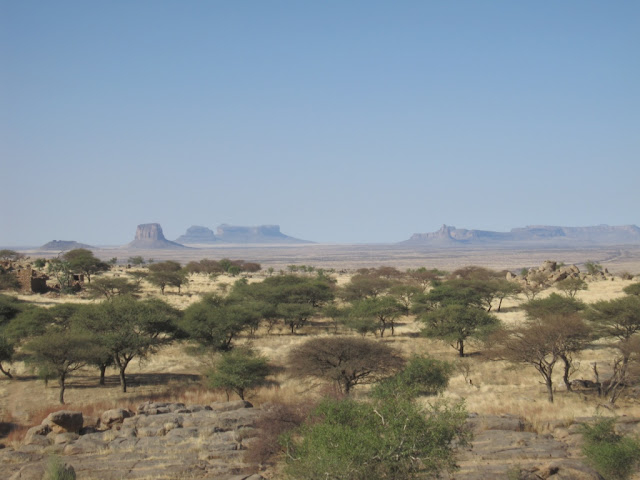
myafricansojourn.blogspot.com -
Sikasso is the capital of the Sikasso Cercle and the Sikasso Region in southern Mali. With 225,753 residents according to the 2009 census, it is Mali's second largest city.
Sikasso is and has always been a mercantile town. Nestled near the multi-state border of Burkina Faso, Ivory Coast, and Guinea, it benefits from a location that connects Africa's landlocked heart to the ports that dot the Atlantic coast. That trading history can still be found among the throbbing and frenetic fruit and vegetable markets that erupt ad hoc on virtually every block throughout the week.
Sikasso also has a second claim to fame. In the late nineteenth century, it was elevated to the status of imperial capital, an honor bestowed by King Tieba Traoré, whose own mother was born there. The Mamelon Hill rises are the place to go to find out more about that story.
Location: Sikasso region, south of Mali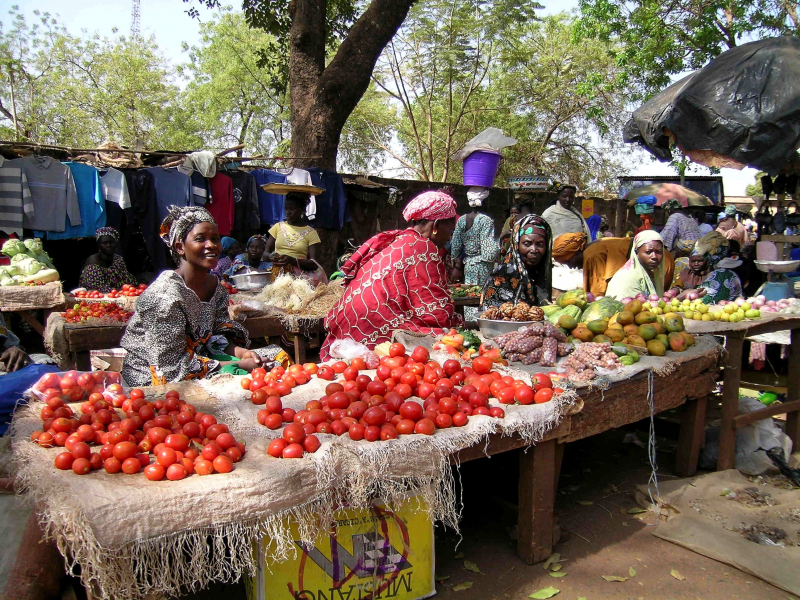
en.wikipedia.org 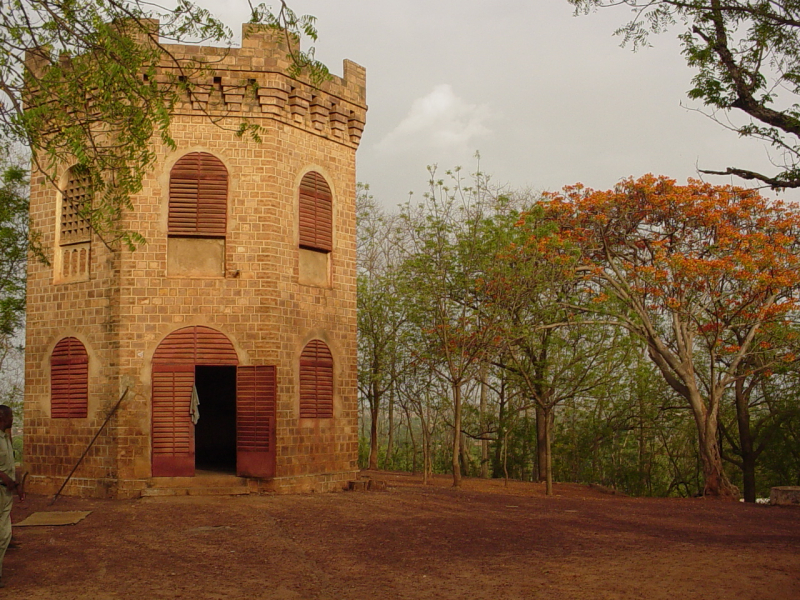
omathosikasso.blogspot.com -
Kayes is a city in the Kayes Region on the Senegal River in Mali, a West African country. According to legend, this is Africa's hottest city. It served as the colonial capital of French Sudan until 1908. The town is a railway stop on the Dakar-Bamako line. Iron and gold are abundant in the area.
Kayes, which is defined by the Senegal River's meanders, continues to bustle and thrum to the sound of market traders and salesmen. In fact, the passage of goods was the town's raison d'être (notice the language), which was first built up by the French in the 1880s to facilitate the movement of produce to and from neighboring West African countries.
Travelers can come here to soak up the lively vibes, look for little trinkets and multi-colored fruits and vegetables in the market, and sip coffee in the shadow of pretty Parisian-style buildings. Away from town, there are even more attractions to visit, such as the Félou Falls, the roaring cataracts of the Gouina Falls, and the ruins of the formidable Medina Fort.
- Location: Kayes Region, Mali
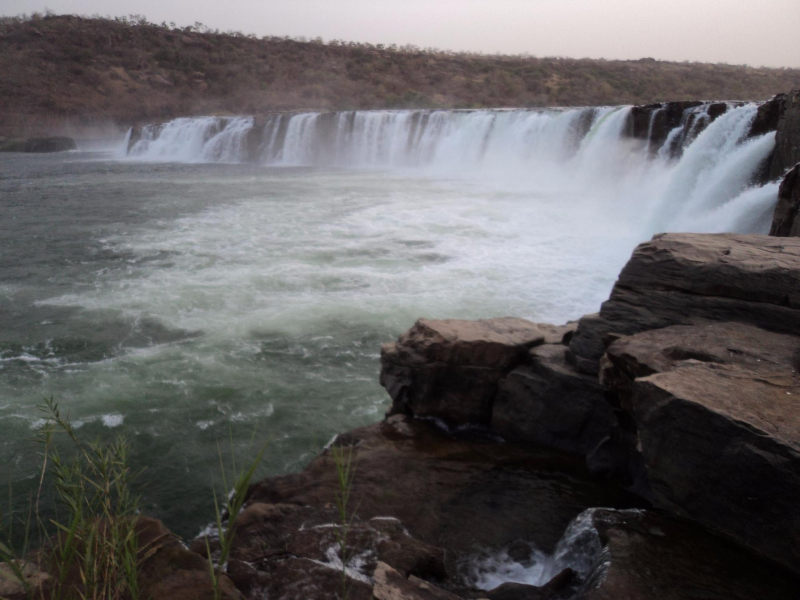
fr.tripadvisor.ch 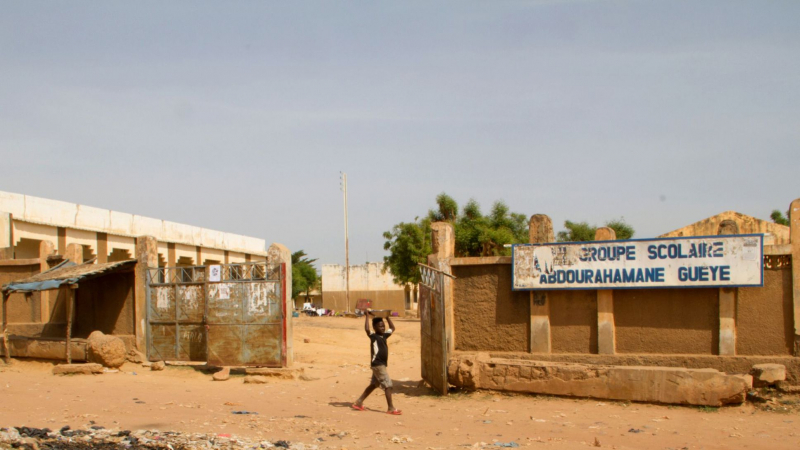
lexpress.fr -
Boucle du Baoulé National Park is located in the western region of Mali, near the town of Bamako. Although the park is mostly covered in West African Savannah, the vegetation is divided into two bio-geographic zones: Sudan Guinea in the south and the Sahelian zone in the north. There are also combretum shrubs, Savannah woodlands, and a dense rain forest on the banks of the Baoule River in the park.
The park was established in 1982 and has been recognized as a UNESCO World Heritage Site since September 1999, making it one of the tourist destinations in Mali you should not miss when visiting!
The park's animals include Saheran gazelles, giant eland, sheep, goats, and a variety of other mammals. The livestock population was estimated to be 13,500 zebus and 59,500 sheep and goats in 1981.The area is home to a variety of ethnic groups, including the sedentary Kakolo, Sarkolés, Malinké, and Bambara (farmers), the transhumant Peuhls and Maures, and the Bozos (fishers). The biosphere reserve is home to between 78,300 and 150,000 people, depending on the season (1998). During the dry season, the land is used for pastoralism in the north and agriculture throughout the area, depending on local rainfall conditions.
- Location: western Mali
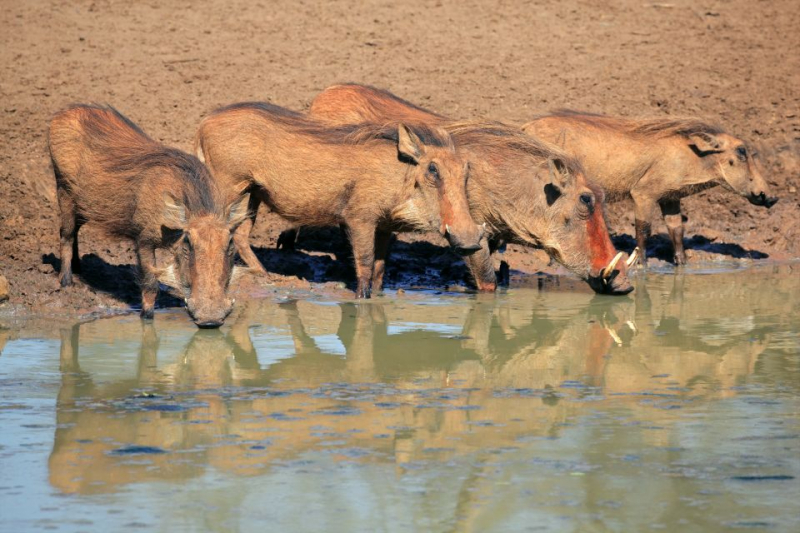
easyvoyage.de 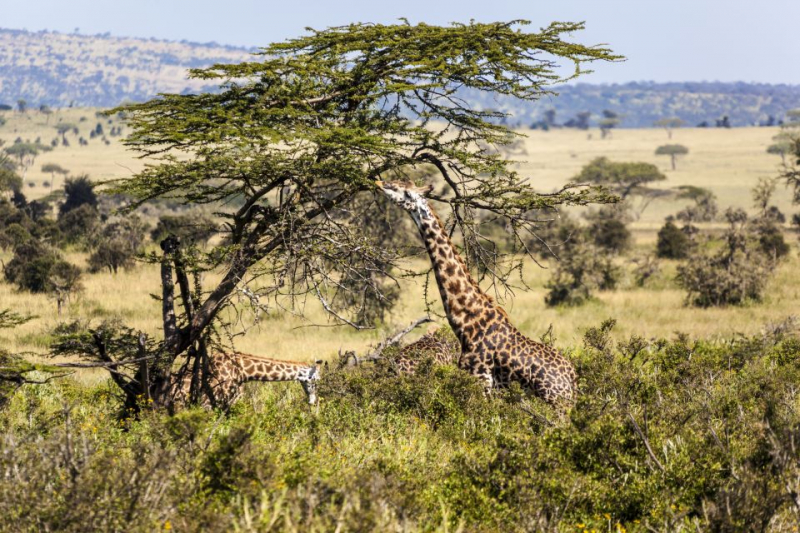
easyvoyage.de -
Taoudenni is unlike anywhere else in Mali. It still exists in the sun-baked heart of the Sahara Desert, serving only one purpose: salt mining. The settlement itself is built on the dried-up bed of an ancient saline lake. Workers come from all over the world to carve large slabs of salt from the earth, which are then loaded onto some of the world's last remaining camel caravans and trekked south to Mopti and other trading cities.
There are also the ruins of an old and infamous prison here, which was built in the 1960s by former ruler Moussa Traoré.
In 1988, the prison was closed.
Édouard Cortier, a member of the French camel corps (méharistes), visited Taoudenni in 1906 and published the first description of the mines. The Taoudenni mines are situated on the bottom of a long-dead salt lake. Miners use crude axes to dig pits that are typically 5 m by 5 m in size and 4 m deep. The miners begin by removing 1.5 m of red clay overburden, followed by several layers of poor quality salt, before arriving at three layers of high-quality salt. The salt is cut into slabs measuring 110 cm x 45 cm x 5 cm in thickness and weighing approximately 30 kg. Two of the high-quality layers are thick enough to be split in half, yielding five slabs from the three layers. After removing the salt from the pit's base, the miners excavate horizontally to create galleries from which more slabs can be obtained.
- Location: Desert Region, Mali
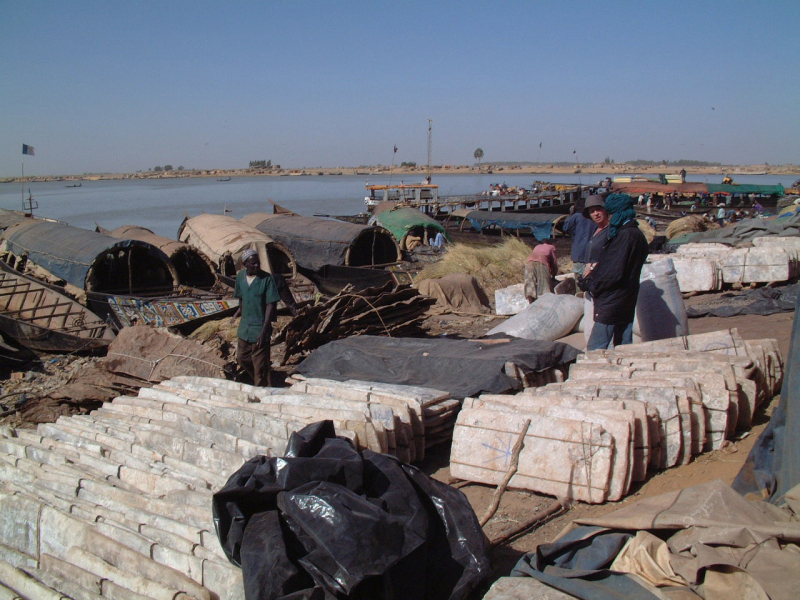
en.wikipedia.org 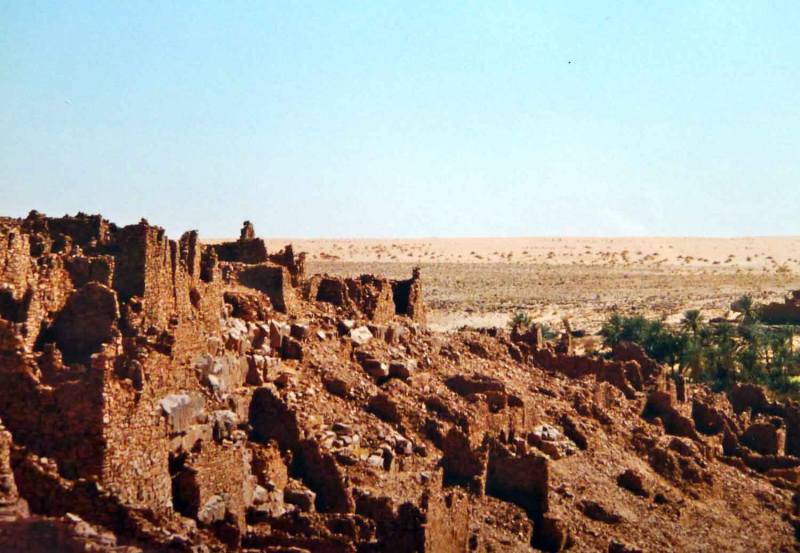
sahara-overland.com












